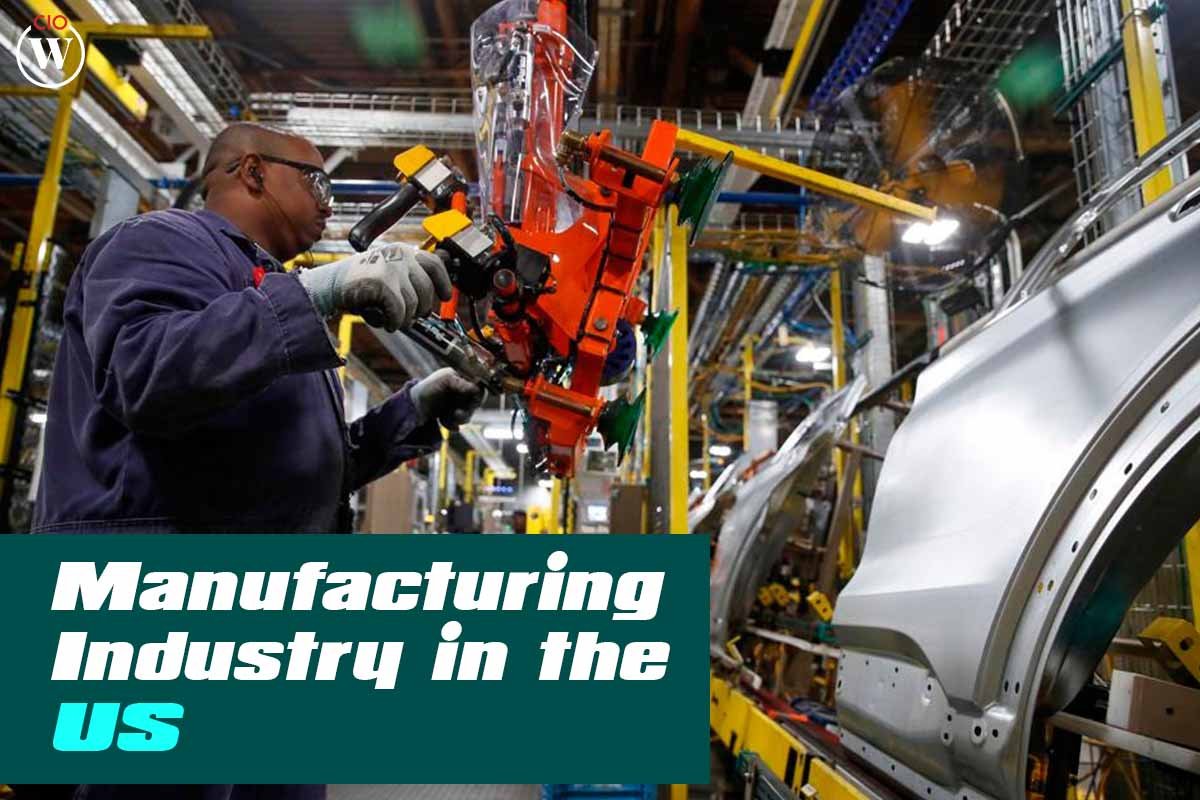What do a thriving economy, a worldwide competitive edge, technological advancement, and a great quality of life all have in common? Without the Manufacturing Industry in the US, none of these would exist. Although it is common to hear that manufacturing is on the decline in the industrialized world, the IoT has led to a modest revival of the industry.
The United States’ robust economy, technological superiority, and high standard of living are all thanks in large part to the manufacturing sector. In the wake of the Industrial Revolution’s birth in the late 1700s, it became an essential force in the growth and development of the American economy.

Manufacturing Industry in the US, in its most basic sense, is the use of mechanical, physical, or chemical processes to convert raw materials into finished goods. It provides the commodities and services that people use on a daily basis and the tools and technology that enable other parts of the economy to flourish.
Say it’s a gorgeous Sunday morning and you and a buddy have made arrangements to play a round of golf. That was only feasible when the club shaft was forged and then shortened by the manufacturer. The grip would have to be made by a different business that specializes in rubber compounds.
The club heads, which have a significant impact on performance thanks to Manufacturing Industry in the US and design benefits, would be manufactured by a third party. After all the pieces are in place, it will need a technically savvy staff to bring it all together. You can’t go about without a vehicle, which necessitates a whole other series of production steps.
Many industries depend largely on manufactured equipment and tools, including agriculture, construction, and healthcare. What about the state of the U.S. economy as a whole? All economic experts believe that without the manufacturing industry, the United States would not be the global superpower it is today.
In fact, it may be impossible to put into perspective precisely how big of a long-term influence manufacturing has had on the U.S. economy without delving into the nitty-gritty specifics. Yet, hey, don’t just take our word for it!
Check out these facts about Manufacturing Industry in the US that simply can’t be ignored, and draw your own conclusions.
1. New figures reveal that manufacturers have added $2.17 trillion to the U.S. economy, up from $1.7 trillion in 2009.
Numerous conclusions may be drawn from this information, but arguably the most important is that the Manufacturing Industry in the US thriving.
Production and profits across all sectors of the American economy slumped after the Great Recession of 2008. The next year saw a modest recovery, and in certain sectors, that trend has continued. What’s the good news? As long as Manufacturing Industry in the US keeps growing and contributing to the economy as a whole, it will be able to help the other industries that haven’t yet caught up.
2. In the United States, the manufacturing sector contributes 12% of GDP. However, just 4.8% of the economy is based on agriculture.
Based on a GDP of $17.419 trillion, of which manufacturing accounted for $2.17 trillion, Manufacturing Industry in the US represents about 12.5% of the U.S. economy. Because GDP is calculated from the output of a country’s factories, this makes perfect sense.
This figure is on the rise in the industry, as we’ve previously highlighted. As more goods are produced, the economy benefits (which means more total prosperity).
3. The manufacturing sector contributes $1.40 for every $1.00 invested. The largest multiplier in any economic field
It would be impossible to overestimate the significance of this realization. National economic health depends on a robust industrial base. Why? Both advanced nations (the United States) and emerging powers (China) have shown that this is the major route to progress.

In international commerce, the Manufacturing Industry in the US relies heavily on manufactured commodities produced domestically. Items like computers, basic metals, and medical gear fall within this category. Our economy would suffer if we couldn’t trade for these products. Because manufacturing has the largest multiplier of any U.S. industry, it is clear that here is where we are putting our money and time to the best (most productive and lucrative) use.
4. The U.S. manufacturing sector is worth $2.1 trillion, making it the world’s ninth biggest economy if it were its own country.
If it were a nation, the industrial sector would rank ninth. The Manufacturing Industry in the US GDP ranks above several other economic superpowers including India, Canada, and Australia, and is second only to that of the United States, China, Japan, Germany, the United Kingdom, France, Brazil, and Italy. That’s a lot of clout for one industry in one economy to have. This is significant because a high GDP is correlated with other desirable outcomes, such as a low unemployment rate, rising consumer demand, and higher corporate and investor profits.
5. In the manufacturing sector, most companies are rather small. Most of the companies (75%) have less than 20 workers, and 99% have fewer than 500.
It’s also reasonable to believe that every company is governed by its own set of internal procedures, beliefs, objectives, and culture. This also implies that they handle issues of productivity, quality, and security in their own unique ways. To rephrase, a greater variety of methods and perspectives are produced by a vast number of small enterprises than by a limited number of large ones.

The industrial industry and the American economy both benefit greatly from this variety because it fosters innovation.









